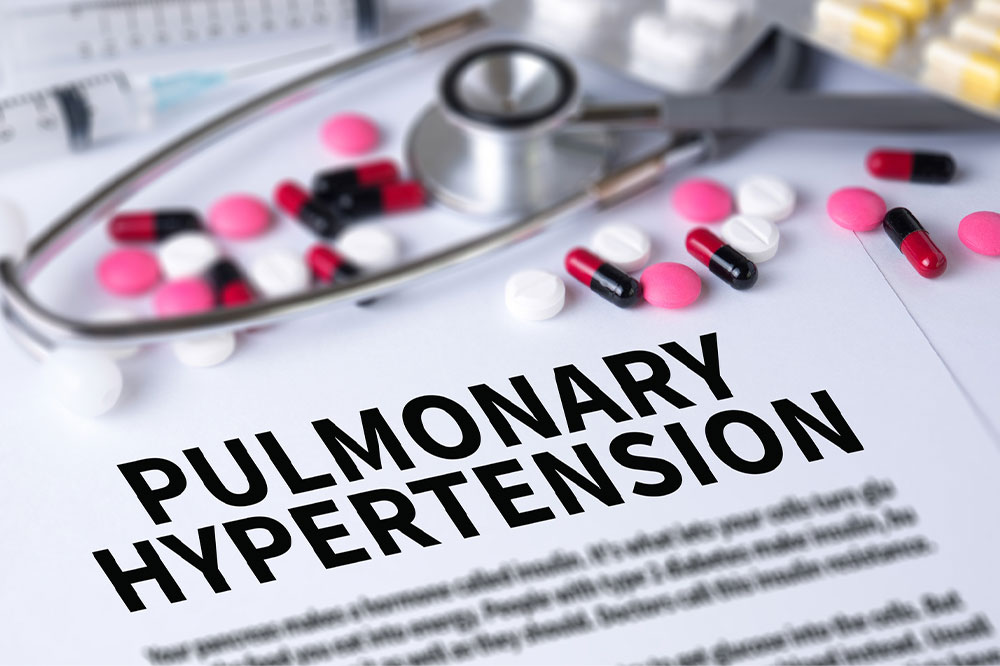
Pulmonary hypertension – Types, symptoms, and causes
Pulmonary hypertension is a serious health condition that affects the pulmonary arteries and the right side of the heart. These arteries transport oxygen-poor blood from the heart to the lungs. The condition is identified by high blood pressure in the pulmonary arteries, which can lead to damage in the heart and cause complications throughout the body. This article offers an overview of pulmonary hypertension, including its different types, symptoms, causes, and signs.
Types of pulmonary hypertension
Pulmonary arterial hypertension (PAH)
Pulmonary arterial hypertension (PAH) is a prevalent form of pulmonary hypertension characterized by the narrowing, stiffening, or obstruction of the pulmonary arteries, resulting in heightened resistance and elevated blood pressure within the lungs. PAH can manifest either as an inherited condition or as a spontaneous development.
Pulmonary hypertension due to left-sided heart disease
In this type of pulmonary hypertension, the functioning of the left side of the heart hampers the circulation of oxygenated blood throughout the body. Therefore, the pathway in the lungs, which carry blood from the heart to the lungs, is more painful as they try to compensate for the loss of the left ventricle.
Pulmonary hypertension due to lung disease
Pulmonary hypertension can arise as a consequence of chronic lung diseases, such as chronic obstructive pulmonary disease (COPD) and interstitial lung disease. These respiratory conditions induce alterations in the pulmonary arteries, leading to heightened pressure levels.
Pulmonary hypertension due to chronic blood clots
Chronic blood clots in the lungs can cause pulmonary hypertension. These clots, known as pulmonary embolisms, block the arteries and impede blood flow. Prompt treatment with anticoagulant aid and interventions may help prevent further complications.
Pulmonary hypertension due to other disorders
Pulmonary hypertension often coexists with other conditions, such as blood and metabolic disorders. However, the exact mechanisms by which this condition triggers pulmonary hypertension are not always clear.
Signs and symptoms of pulmonary hypertension
Recognizing the symptoms of pulmonary hypertension is vital for early detection and timely intervention. Here are some common signs to watch out for:
Shortness of breath, especially during physical activity
Fatigue and weakness
Chest pain or pressure
Rapid heartbeat or palpitations
Dizziness or fainting spells
Abnormal heart sounds
The enlarged right ventricle of the heart
Edema (swelling) in the lower extremities
Raynaud’s phenomenon (discoloration of fingers or toes due to cold exposure)
Causes of pulmonary hypertension
While the exact cause may vary depending on the type of pulmonary hypertension, here are some common factors that can contribute to its development:
Genetic factors
Health conditions
Lifestyle factors
Toxin exposure
Blood clotting disorders
Pulmonary hypertension is a critical ailment that necessitates prompt identification and effective treatment. It is essential for individuals to have a comprehensive understanding of the various types, symptoms, causes, and indicators of pulmonary hypertension in order to identify the condition and seek timely intervention. By increasing awareness about this condition, we can make valuable contributions towards achieving better outcomes and enhancing the overall quality of life for those impacted. Learning about pulmonary hypertension is important in order to take appropriate action and seek timely intervention if needed.




